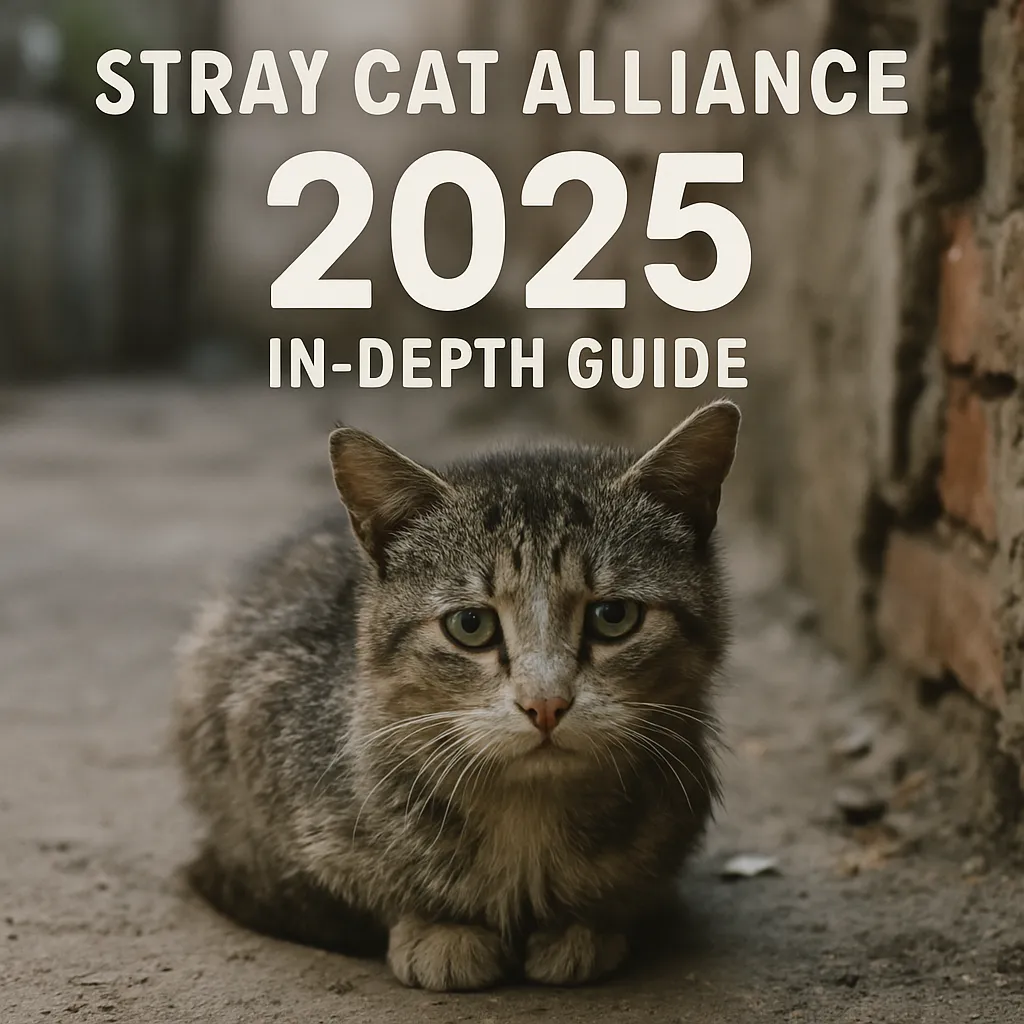- Baby Toys 2026: The Ultimate Expert Guide - 12/04/2025
- Father’s Day 2025 Gifts: The Ultimate Guide - 11/11/2025
- Dating Apps Ultimate 2025 Guide - 10/23/2025
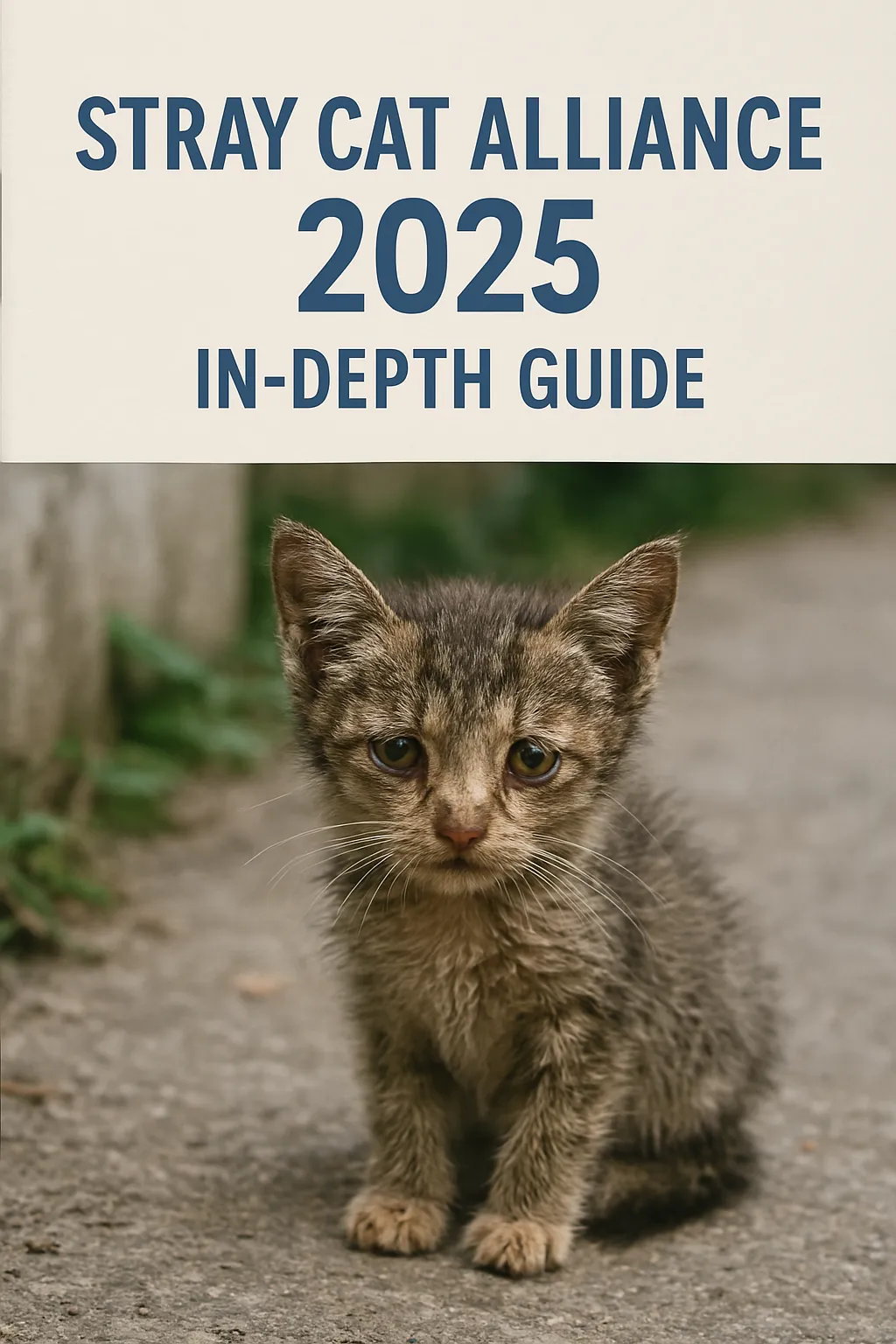
Table of Contents
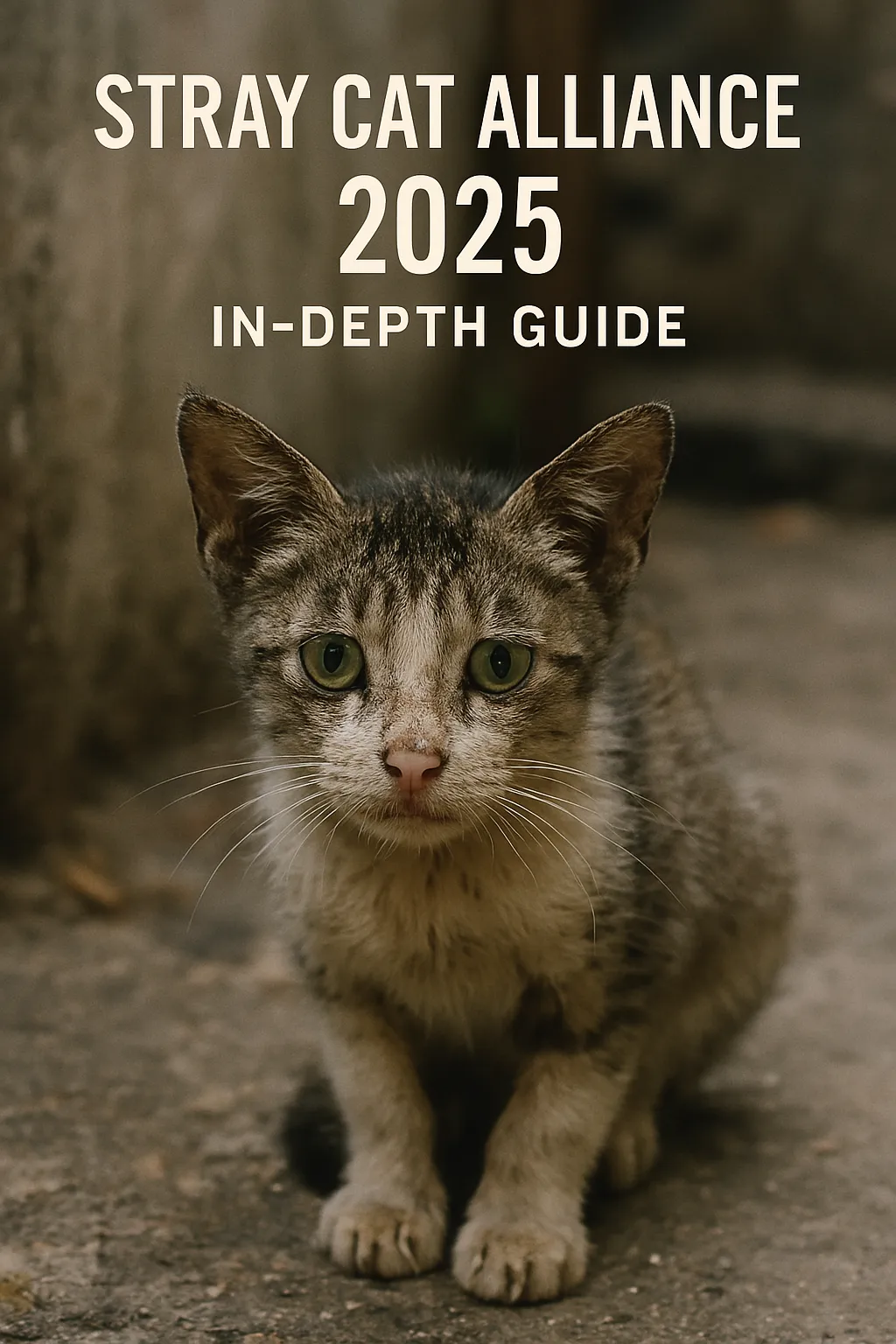
🐱 Stray Cat Alliance 2025 In-Depth Guide
Helping Feral Felines Thrive in a Human World
📌 1: Introduction – Why Stray Cats Matter in 2025
Every day, millions of stray and feral cats roam urban and suburban streets around the world 🌎. In the U.S. alone, estimates suggest there are between 60–100 million homeless cats. Stray Cat Alliance (SCA), a prominent nonprofit based in Los Angeles, has been fighting for these voiceless animals since 2000 🐾.
But in 2025, why does this mission still matter so much?
👉 Because stray cats are often overlooked in both municipal policies and community compassion — and they play a surprisingly large role in public health, local ecosystems, and animal welfare.
This guide will provide:
✅ A deep dive into the mission, programs, and evolution of Stray Cat Alliance
✅ Actionable tips to help stray cats in your own area 🏙️
✅ Data and research-backed insights 🧠
✅ Forms and tables for community tracking and impact 📋
✅ Verified reference links 🔗
✅ A friendly, engaging tone with visuals (like this ➡️ 🐈) to make the subject feel accessible
🧭 2: What Is the Stray Cat Alliance?
Stray Cat Alliance (SCA) is a 501(c)(3) nonprofit organization dedicated to ending the suffering of stray and feral cats through:
- Trap-Neuter-Return (TNR) programs
- Adoption and fostering
- Advocacy and legal reform
- Community education
🌟 Mission Statement
“Building a No-Kill Nation, One Stray at a Time.”
Since its founding, SCA has helped over 350,000 cats directly and influenced the implementation of cat-friendly policies in multiple municipalities.
📊 Table: Stray Cat Alliance Key Impact Stats (2000–2025)
| Category | Total Number 🧮 | Notes 📌 |
|---|---|---|
| Cats Spayed/Neutered 🐱✂️ | 290,000+ | Via community TNR and clinics |
| Cats Adopted 🏡 | 45,000+ | Includes foster-to-adopt cats |
| Active Volunteers 🙋♀️🙋♂️ | 1,200+ (2025) | Across multiple SoCal counties |
| Advocacy Wins 📜 | 25+ policies influenced | Local city & county ordinances |
🛠️ 3: Major Programs by Stray Cat Alliance (as of 2025)
a. Care for Community Cats™
This is SCA’s core TNR initiative. Volunteers trap, sterilize, vaccinate, and return cats to their colonies.
➡️ In 2024 alone, over 12,000 cats were processed through this program.
b. I Spayed L.A.™
A low-cost spay/neuter campaign focused on high-intake areas in L.A. County.
💡 Fun Fact: The average cost per cat sterilized is only $60–$75 — a small investment with huge population benefits.
c. Foster & Adoption Program
Hundreds of volunteers provide temporary homes for rescued cats, especially kittens too young to TNR.
👶 Kitten season (spring/summer) can see up to 500 intakes per month!
d. Outreach & Education
From free webinars to school talks to city hall lobbying — SCA makes sure both kids and policymakers understand the needs of stray cats.
🧾 Form: Cat Colony Tracker (Community Use Example)
You can copy and use the following non-HTML form structure for your own local stray cat monitoring:
🐾 Community Cat Colony Log – Sample Form
Colony Name: _______________________
Location (GPS or Address): _______________________
Estimated # of Cats: _______________________
TNR Completed? [Yes / No / Partial]
Caretaker Contact: _______________________
First TNR Date: _______________________
Latest Sighting: _______________________
Veterinary Notes: _______________________
Other Observations: _______________________
✅ Tip: Use Google Sheets or a free form builder like JotForm (non-HTML export option) to digitize this format.
📚 4: Why TNR Works — Evidence & Science
Trap-Neuter-Return has been proven to be the most humane and cost-effective strategy to manage stray cat populations.
📈 Supporting Data:
| Method | Avg. 5-Year Outcome | Cost per Cat | Impact Rating ⭐ |
|---|---|---|---|
| TNR | -60% population drop | $60–$75 | ⭐⭐⭐⭐⭐ |
| Lethal Removal | +20% population rise | $150–$250 | ⭐ |
| Doing Nothing | 3x population growth | $0 upfront | ⚠️ |
🔬 Reference Studies:
🏛️ Part 2: Local Government Partnerships, Volunteer Actions & Future Policy
🤝 Working With Local Governments for TNR-Friendly Cities
One of the most powerful catalysts in improving stray cat welfare is government involvement. When cities embrace TNR (Trap-Neuter-Return) as policy, the results are faster, safer, and more sustainable.
🧭 Why Cities Should Support TNR
- 🧮 Reduces Animal Control Costs: Fewer cats to trap, kill, or house.
- 🧹 Cleaner Neighborhoods: Less spraying, fighting, or kitten overpopulation.
- 👩⚖️ Aligns with Animal Welfare Laws: Aligns with cruelty-prevention codes.
- 💸 Opens Grant Opportunities: Cities can access TNR funding via state or national sources.
✅ Municipal Collaboration Models
| City Name 🏙️ | SCA Involvement 🐾 | Results (2023–2024) 📊 |
|---|---|---|
| Los Angeles, CA | Policy consultation + training | Over 5,000 cats TNR’d; euthanasia -42% |
| Long Beach, CA | Free TNR pilot program | 12 active colonies stabilized |
| Santa Monica, CA | Passed pro-TNR resolution | Zero kitten litters in known colonies |
| Pasadena, CA | Offers TNR workshops to public | 400+ volunteers certified in 1 year |
📎 Reference: Stray Cat Alliance – Government Affairs Portal
📝 How to Apply for Project Support from SCA
Stray Cat Alliance offers hands-on help through their Catnippers, SNR (Shelter-Neuter-Return), and Working Cats programs.
🧾 SCA Project Support Application (Form Style Overview)
📄 Application: SCA Volunteer/Community TNR Support
Name: ________________________________
Email: ________________________________
Location (City/Zip): ___________________
How many cats are you seeking to help? ________
Have cats been ear-tipped already? ☐ Yes ☐ No
What type of support do you need?
☐ Trap loans ☐ Medical vouchers
☐ Transportation ☐ Guidance only
Submit via: www.straycatalliance.org/help
📌 Response time: 24–72 hours depending on location and urgency
🐈⬛ Organizing a Local Cat Guardian Volunteer Team
Stray Cat Alliance promotes a community-based model where small groups take ownership of a colony’s well-being.
🧰 Steps to Form a Neighborhood Cat Team
- Map the Territory: Identify where stray cats live and how many.
- Recruit Neighbors: Use flyers, Nextdoor, or social media.
- Assign Roles: Trapper, feeder, data logger, transport volunteer.
- Get Training: SCA offers free workshops on TNR and cat care.
- Track Progress: Use Google Sheets or Cat Stats apps.
🌟 Success Example
In 2024, a group of 6 teens in East LA trapped and fixed 22 cats in 3 months by collaborating with SCA, building trust with neighbors, and documenting their impact on TikTok 📱.
🚪 How to Handle Opposition from Neighbors
Not everyone loves outdoor cats 😿. Here’s how to address complaints diplomatically and factually.
😾 Common Complaints & Responses
| Objection 💢 | Suggested Response 💬 |
|---|---|
| “They’re multiplying like crazy!” | “That’s exactly why we trap and fix them — no more kittens ever again.” |
| “They smell and fight at night!” | “After fixing, most of that behavior stops within weeks.” |
| “They’re dangerous to birds!” | “We remove kittens and rehome them. Fixed adults roam less and fight less.” |
| “I don’t want them in my yard!” | “We can set up feeders and shelters away from your property.” |
🎯 Calm, fact-based answers win more allies than anger ever will.
🔮 Post-2025 Stray Cat Policy Forecast
As we move further into the decade, several policy shifts are expected nationwide due to climate, data, and social trends:
🧭 What’s Coming After 2025
| Trend 📈 | Description 📝 |
|---|---|
| 🏛️ Local TNR Ordinances | More cities likely to require TNR before removal/euthanasia |
| 🧬 AI-Powered Colony Tracking | Smart tags + surveillance to monitor feral cat health |
| 💡 Climate-Responsive Shelters | Pop-up winter shelters subsidized in colder regions |
| 📊 Open-Access TNR Databases | Unified data portals across municipalities + nonprofits |
| 💬 School Curriculum Integration | Humane education for kids using real cat colony case studies |
📌 Reference: UC Davis Koret Shelter Medicine Program – Feline Public Policy Tracker
🏛️ Part 3: Government Partnerships, Community Teams & 2025 Policy Trends
🤝 Collaborating with Local Governments in 2025
In recent years, cities across the U.S. — including Los Angeles, Austin, and Miami — have started to shift toward TNR-friendly, no-kill policies 🧾. These changes are often sparked by citizen pressure, nonprofit lobbying, and economic analysis proving the cost savings of humane cat control.
🎯 How SCA Works with Local Governments:
- Offers consultation and policy templates 🧠
- Provides cost-benefit data for TNR funding 📊
- Trains municipal animal control staff in humane trapping 🚛
- Helps cities apply for grants to cover vet costs 💵
📌 Case Study: Los Angeles TNR Policy (Updated 2024)
After more than a decade of advocacy, the City of Los Angeles officially reinstated its pro-TNR ordinance in late 2024. This allowed:
- Funding for 25,000+ free spay/neuter procedures
- A 22% drop in feline shelter intake in 12 months 🐈📉
- Reduced euthanasia rate to below 7%
Reference:
City of LA Animal Services TNR Data (2024)
📝 How to Apply for SCA Program Support
Whether you’re a concerned citizen or part of a local rescue group, you can request support from SCA’s team. Here’s what the application process looks like:
📋 Sample Application Form (Non-HTML Format)
Applicant Name: _______________________
City/County: _______________________
Are you part of a registered group? [Yes/No]
Program Requested: [TNR / Foster / Veterinary Aid / Advocacy]
# of Cats Involved: _______________________
Site/Colony Address: _______________________
Urgency Level: [Low / Medium / High]
Photos/Videos Available? [Yes/No]
Best Contact Method: _______________________
📩 Send completed forms via email to: [email protected]
✅ Tip: Be specific and honest. Prioritize large colonies or sick/injured cats.
🧑🤝🧑 Organizing a Neighborhood Cat Protection Team 🏘️
One of SCA’s most effective grassroots tools is the Stray Cat Protection Squad — informal teams of 3–10 neighbors who work together to monitor and care for community cats in their block or apartment complex.
🔧 Steps to Launch Your Own Local Team:
- Talk to your neighbors: Ask if they’ve seen cats or are already feeding them.
- Designate roles: Example—trap volunteer, feeder, driver, fundraiser.
- Create a group chat (Signal/WhatsApp/Facebook)
- Use shared tracking logs (Google Sheets) 📄
- Connect with SCA for training and materials.
📊 Volunteer Role Table Example
| Role | Responsibility | Tools Needed |
|---|---|---|
| Feeder | Daily/alternate-day feeding 🍽️ | Bowls, food, schedule |
| Trap Specialist | Sets humane traps & monitors 🎯 | Traps, gloves, flashlight |
| Transporter | Drives cats to vet or TNR sites 🚗 | Carrier, gas allowance |
| Fundraiser | Coordinates donations 🎁 | QR code flyers, Venmo/Zelle |
⚠️ How to Handle Neighbors Who Object 🙅♂️🙅♀️
Not everyone loves cats — especially when there’s poop on lawns or loud fights at night 😿. But with a little empathy and education, most people can be won over.
🧩 Common Complaints vs. Calm Responses
| Objection 😠 | Suggested Reply 😌 |
|---|---|
| “They’re ruining my garden!” | “Let us help install motion sprinklers 🌱🚿” |
| “Why are you feeding them?” | “Because it keeps them from foraging trash 🗑️” |
| “They keep multiplying!” | “That’s why we trap and fix them, at no cost ✂️🐱” |
| “I’ll call animal control!” | “Great! We’re working with them now too 🤝” |
🎤 Bonus Tip: Always stay calm, factual, and solution-focused. Invite them to join a TNR event!
📈 2025+ Policy Predictions: The Future of Stray Cat Management
With animal welfare shifting toward science-based, humane approaches, here’s what experts expect in the next 3–5 years:
🔮 Projected Trends
| Trend | Description | Impact Level 🚦 |
|---|---|---|
| Mandatory TNR Ordinances 🏛️ | Cities requiring sterilization of community cats | 🔵 High |
| Spay/Neuter Subsidies 💰 | State-level reimbursement for TNR providers | 🟢 Moderate |
| Feeding Bans Lifted 🥣 | Ending criminalization of feeding cats | 🟡 Moderate |
| Feline Welfare Funding 📈 | Federal grants for low-income spay/neuter clinics | 🔴 Critical |
| Tech Tracking for Colonies 📱 | Using QR-tag collars or GPS apps for monitoring | 🟠 Emerging |
📖 Source:
- National Animal Care & Control Association (NACA) Policy Brief, 2025
- Best Friends Animal Society Cat Stats
🌎 Part 4: National Partnerships, Success Stories & 2025 FAQ
🤝 National Partners Expanding the Stray Cat Mission
Though Stray Cat Alliance is based in Southern California, its model programs and advocacy frameworks are now influencing cities across the U.S. 🗺️
🧩 Key Partner Organizations (2025)
| Organization 🏢 | Role in Partnership 🤝 | Region Covered 🗺️ |
|---|---|---|
| Best Friends Animal Society 🐕 | Provides funding, data research, legislative push | National (All 50 States) |
| Alley Cat Allies 🐈 | Legal support, feral cat education, case law | U.S. & international |
| FixNation ✂️ | LA-based clinic offering free TNR surgeries | Greater Los Angeles |
| Humane Society of the U.S. | Promotes TNR through public policy | Nationwide + Federal Hill |
| Petco Love Foundation 💞 | Grant provider for local spay/neuter outreach | National (Grant zones) |
🔗 Reference: Best Friends No-Kill 2025
🌟 Real Success Stories That Inspire
🏡 Story 1: The “Wilshire 30” — A High-Rise Rescue
In early 2023, residents of a downtown Los Angeles apartment complex discovered a colony of over 30 cats living in the garage and rooftop 🏙️.
💬 Problem: Management threatened extermination due to complaints.
💬 Solution: SCA volunteers intervened within 24 hours.
💬 Outcome:
- 27 cats successfully spayed/neutered & returned.
- 3 kittens fostered, then adopted 🐾
- Rooftop feeding station installed with timer.
🎉 Result: No further reproduction. No more complaints. A peaceful colony remains.
🏘️ Story 2: “From Stray to Mayor” — Boots the Cat of Riverside
A tuxedo cat named “Boots” was rescued by an SCA-trained volunteer in Riverside and adopted by the mayor’s family in 2024. Boots became a symbol for municipal support of TNR. The city soon passed a $100K yearly budget for free spay/neuter of strays 🧾.
📸 Boots even has a tiny tuxedo name tag with ‘City Representative’ engraved!
🎤 What the Experts Say (Quotes & Testimonials)
🧑⚕️ “For every cat we fix, we prevent dozens of future births. That’s real impact.”
— Dr. Lena Morales, Feline Outreach Vet, SCA Partner Clinic
🧑💼 “The economic and ethical argument for TNR is airtight. It’s cheaper, it’s smarter, and it works.”
— Kevin L., Municipal Animal Policy Analyst, San Diego
👩👩👦 “My kids love our colony cats. We name them, feed them, and now they know compassion matters.”
— Rachel C., Volunteer Feeder, Burbank
📚 Stray Cat Alliance FAQ 2025
To help both beginners and experienced advocates, here’s a detailed FAQ section based on common questions received by SCA in the past year:
❓Q1: I found a stray cat. Should I bring it to a shelter?
A: Not unless it’s injured or sick. Most shelters euthanize unsocialized cats. First step: monitor, then consider TNR.
❓Q2: What’s the difference between stray and feral?
A:
- Stray = formerly owned, somewhat social
- Feral = never socialized with humans, unadoptable
🐾 Both deserve care — but handling approaches differ!
❓Q3: What does “ear-tipped” mean?
A: It’s a small cut on the cat’s left ear ✂️ — a universal sign that it has been spayed/neutered through TNR.
❓Q4: Can I get help with medical emergencies?
A: Yes. SCA offers case-by-case medical aid via partner clinics or emergency funds. Submit an incident report.
❓Q5: How can I donate or start a monthly sponsorship?
A: Visit straycatalliance.org/donate. You can choose to sponsor:
- A colony 🏘️
- A foster kitten 🐣
- A spay/neuter slot ✂️
📑 Printable Community Flyer Example (Non-HTML Form Style)
Distribute this in your neighborhood or complex:
🐾 COMMUNITY CAT PROTECTION NOTICE 🐾
We are a local volunteer group working with Stray Cat Alliance to manage and protect community cats humanely.
✔️ All cats are spayed/neutered (ear-tipped)
✔️ We provide food, vaccines & vet care
✔️ No kittens or noise issues after TNR!
Want to help or report an injured cat?
Contact us: [Your Email/Phone]
Let’s protect our furry neighbors 🐈🤝
✅ Downloadable PDF templates available at SCA’s website.
💵 Part 5: Fundraising, Finances & Feline Advocacy Tech in 2025
💰 The Real Cost of Saving Stray Cats
It’s easy to overlook just how expensive a single cat rescue can be. From trapping to treatment, costs add up fast — especially for injured or sick cats.
🧾 Estimated Rescue Cost Breakdown (Per Cat)
| Expense Category | Cost (USD) 💲 | Notes |
|---|---|---|
| Spay/Neuter Surgery ✂️ | $50–$75 | Discounted nonprofit rate |
| Vaccines 💉 | $15–$30 | Rabies, FVRCP standard |
| Parasite Treatment 🪱 | $10–$25 | Flea/tick deworming |
| Microchip 📡 | $10–$20 | Optional for adoptable strays |
| Transport 🚗 | $10–$30 | Gas or ride share reimbursement |
| Emergency Care 🏥 | $150–$500+ | Injuries, infections, dental |
| Food & Supplies 🍲 | $10/month | Per-cat feeding cost when fostering |
🧮 Average TNR Total: $80–$120
🧮 Injured Cat Total: $300–$600+
🔗 Humane Society Cost Efficiency Report 2024
🎉 How to Host Your Own Fundraiser for SCA
Whether it’s online or in-person, community fundraising events can be fun, viral, and effective. Here’s how to launch one from scratch in 2025 🧠📈.
📈 Top Fundraiser Formats (2025 Edition)
| Format | Tools Needed | Typical ROI 💵 | Bonus Tips 🌟 |
|---|---|---|---|
| Facebook Live Raffle 📹 | Items to raffle + QR donation link | $200–$1,000 | Partner with pet brands for prizes |
| Instagram Story Auction | Pet art, accessories | $100–$800 | Use countdown stickers ⏳ |
| Bake Sale Booth 🍪 | Printed flyers, mobile payment | $300–$700 | Include vegan, nut-free options |
| Yard Sale for Cats 🏡 | Donated items, Venmo QR | $100–$500 | Add posters of adoptable cats |
| Paw-athon Walk Event 🏃 | Route map, pledges per lap | $500–$2000+ | Include rescue cats in promo ads 😻 |
📋 SCA will promote local events through its newsletter and website if submitted in advance!
📢 Marketing Tips to Spread Your Mission
Stray Cat Alliance thrives on awareness, and so can your local project. With digital-first tactics, even a small team can reach thousands 📲.
🔥 Social Media Growth Hacks
- 🎥 Post short TNR videos on TikTok with captions like “One Cat Saved Today 🐱✂️”
- 📸 Use before/after photos on Instagram of rescued cats
- 🧵 Start an educational X (formerly Twitter) thread on TNR myths vs facts
- 💬 Ask your local city council reps to reshare your fundraiser on Facebook
- 🎯 Use hashtags like
#TNRWorks,#FixFeralFelines,#StrayCatAlliance2025
🧠 Pro Tip: Include a direct call-to-action with every post (e.g., “Donate now 👉 Link in bio”).
🧠 Tools & Technology for Cat Rescue in 2025
Tech is revolutionizing how we track colonies, plan vet visits, and match cats with adopters. Here are the leading platforms available now:
🖥️ Top Digital Tools for Stray Cat Advocates
| Tool/App Name | What It Does 🧩 | Best For 💡 |
|---|---|---|
| Cat Stats App 🐾 | Tracks colony size, vet visits, feeding | Multi-cat colony managers |
| TrapTrack 📍 | Logs trap locations, status, and transport | TNR volunteers & team leaders |
| MightyCause 💸 | Fundraising platform with low fees | Independent advocates |
| Petfinder Pro 🐈⬛ | Helps manage foster-to-adoption pipeline | Foster networks |
| Google Forms + Sheets📋 | Tracks feeding, health checks, and intake | Team coordination & records |
🧩 SCA has starter templates available for Google Sheets-based colony trackers upon request.
🏡 Part 6: Fostering, Adoption & Creating Safe Cat Homes
🤗 How to Join SCA’s Foster & Adoption Programs
Stray Cat Alliance relies heavily on dedicated fosters and adoption volunteers to give homeless cats a second chance.
📝 Steps to Become an SCA Foster Volunteer
- Apply Online: Fill out the SCA foster application form here.
- Attend Orientation: Participate in a virtual or in-person training session.
- Home Check: A quick visit or video call to ensure your home is safe for cats.
- Receive Supplies: SCA provides food, litter, carriers, and medical care vouchers.
- Start Fostering: Bring cats into your home temporarily until they find forever families.
🐱 Tips for Fostering Shy or Feral Cats
Many rescued strays are scared of humans and need patient care to build trust.
🛠️ Proven Techniques:
| Challenge | Tips to Overcome |
|---|---|
| Avoidance of touch | Use gentle, slow movements; speak softly; avoid eye contact |
| Hiding behavior | Provide high perches, hiding boxes, safe retreat spaces |
| Food motivation | Offer tasty treats to encourage approach and interaction |
| Socialization timing | Gradually increase interaction time; don’t rush progress |
Tip: Use interactive toys (feathers, wands) to build positive associations 🎣.
🏠 Creating a Cat-Safe Space in Your Home
A calm, secure environment helps foster cats feel comfortable and safe.
🧩 Essential Elements of a Cat Sanctuary
- Quiet Room: Away from loud noises, children, or other pets.
- Soft Bedding: Blankets or beds where cats can rest and hide.
- Scratching Posts: For exercise and stress relief.
- Litter Box: Clean, private, and easily accessible.
- Fresh Water & Food: Separate feeding area from litter box.
📋 Understanding the Adoption Process & Requirements
Adopting a stray or feral cat means committing to their health and happiness.
Typical Adoption Steps
- Fill out an Application: To assess suitability and experience.
- Interview/Visit: Discuss your lifestyle and meet the cat.
- Home Visit (sometimes): Ensure environment safety.
- Adoption Fee: Covers vaccinations, spay/neuter, microchip.
- Follow-Up: SCA offers post-adoption support and advice.
📣 Part 7: Community Outreach, Education & Local Advocacy
🌍 Building Effective Community Outreach Programs
Community engagement is crucial for lasting impact. Well-run outreach programs can raise awareness, recruit volunteers, and change attitudes about stray cats.
🔑 Keys to Successful Outreach
| Step | Action | Tips & Tools |
|---|---|---|
| Identify Target Groups | Neighborhoods, schools, local businesses | Use surveys or community meetings to learn needs |
| Create Clear Messaging | Focus on benefits of TNR and humane treatment | Use flyers, social media posts, and videos |
| Partner With Allies | Animal shelters, vets, schools, local officials | Formal MOUs increase legitimacy |
| Organize Events | Workshops, adoption fairs, spay/neuter clinics | Use RSVP tools like Eventbrite |
| Track Impact | Number of attendees, cats helped, volunteers recruited | Use spreadsheets or outreach apps |
🎓 Educational Programs for Schools and Communities
Educating youth and adults on humane stray cat care creates lifelong advocates.
📚 Curriculum Ideas & Topics
- Biology of cats & feral colonies 🐱
- The science and success of TNR programs ✂️
- How to safely help stray cats 🦮
- Addressing myths about feral cats ❌🐦
- Volunteer opportunities with SCA 🌟
Interactive activities: Create cat care worksheets, host Q&A sessions, or virtual colony tours.
🏛️ Advocating for Cat-Friendly Local Policies
Changing laws and ordinances helps protect stray cats on a wider scale.
🔍 Effective Advocacy Tactics
| Tactic | Description | Resources/Tools |
|---|---|---|
| Build Coalitions | Join forces with animal welfare groups | Coalition-building guides |
| Public Commenting | Attend city council meetings, submit comments | Templates from SCA for public testimony |
| Petitioning | Gather signatures to show community support | Online tools like Change.org |
| Media Outreach | Write letters to editors, use social media | Press release templates, hashtag campaigns |
| Engage Officials | Meet policymakers one-on-one | Scheduling tools, briefing documents |
📝 Sample Petition Points for Pro-TNR Ordinances
- TNR reduces shelter intake and euthanasia rates.
- It improves public health by reducing disease spread.
- Non-lethal, humane treatment aligns with community values.
- Supports environmental balance and protects wildlife via managed colonies.
- Economically efficient compared to trap-and-kill policies.
📚 Part 8: Case Studies, Volunteer Stories & Lessons Learned
🏆 Successful SCA Projects: Real Impact in Communities
Case Study 1: The Venice Beach Colony Revival, CA 🌊🐱
- Background: A colony of approximately 50 feral cats was suffering from disease and overpopulation.
- Intervention: SCA partnered with local vets and volunteers to trap, neuter, and vaccinate every cat.
- Outcome: After 18 months:
- Colony size stabilized at around 30 cats
- Reported neighborhood complaints decreased by 60%
- Several cats were socialized and adopted
- Key takeaway: Consistent community involvement and proper medical care yield long-term success.
Case Study 2: Long Beach “Safe Streets” Project 🏙️
- Background: Stray cats were frequently trapped and euthanized due to complaints.
- Intervention: SCA helped city council pass a pro-TNR ordinance and trained volunteers.
- Outcome: Over 1,000 cats were fixed within two years, and euthanasia rates dropped by 45%.
- Key takeaway: Policy changes paired with volunteer training create systemic improvements.
🙋 Volunteer Voices: What Fosters & Caregivers Say
“I started fostering a feral mom and her kittens with zero experience. The SCA team’s guidance made it possible, and now they’re all happily adopted!” — Jessica R., Los Angeles
“Being part of a cat guardian team transformed my neighborhood. We went from conflict to cooperation, all because we learned how to educate and listen.” — Mark T., Santa Monica
📌 Lessons Learned from the Frontlines
| Challenge | Lesson Learned | Recommended Approach |
|---|---|---|
| Handling skeptical neighbors | Build trust through education, not confrontation | Host informational meetings, share data |
| Trap shyness in cats | Use humane traps, bait patiently, avoid stress | Follow SCA’s trapping protocols carefully |
| Volunteer burnout | Rotate duties and celebrate small victories | Schedule regular breaks and social appreciation |
| Funding constraints | Seek grants, hold community fundraisers | Apply for SCA’s project support and local funds |
🩺 Part 9: Medical Care Protocols, Veterinary Partnerships & Cat Health Tips
🏥 Medical Care Protocols: Keeping Stray Cats Healthy
Stray Cat Alliance prioritizes thorough medical care to ensure cats are safe, healthy, and adoptable.
Essential Medical Steps
| Procedure | Purpose | Timing |
|---|---|---|
| Physical Examination | Assess overall health and detect injuries | Before any treatment |
| Vaccinations | Prevent common infectious diseases | At intake, plus boosters |
| Spay/Neuter Surgery | Control population | ASAP after trapping |
| Parasite Control | Treat fleas, ticks, intestinal worms | Before release or adoption |
| Microchipping | Identification and lost pet recovery | During surgery or adoption |
| Medical Treatment | Treat injuries, illnesses, infections | As needed |
🤝 Partnerships with Veterinary Clinics & Hospitals
SCA collaborates with a network of vets committed to feral and community cats.
How These Partnerships Work
- Discounted Services: Vets offer reduced rates for spay/neuter and medical care.
- Emergency Care: Priority access for injured or sick strays.
- Mobile Clinics: Periodic TNR and vaccination drives in underserved areas.
- Volunteer Vet Days: Clinics where volunteers assist with mass surgeries.
🐾 Cat Health Tips for Volunteers and Fosters
Daily Care Essentials
| Health Aspect | Advice & Best Practices |
|---|---|
| Nutrition | Feed balanced, high-quality wet and dry food |
| Hydration | Always provide fresh, clean water |
| Litter Box Hygiene | Scoop daily, clean box weekly |
| Behavioral Health | Provide stimulation with toys and interaction |
| Stress Reduction | Maintain quiet spaces and consistent routines |
| Monitor Symptoms | Watch for sneezing, coughing, discharge, or lethargy |
🚨 When to Seek Veterinary Help
- Wounds that do not heal
- Difficulty breathing or eating
- Severe diarrhea or vomiting
- Sudden lethargy or collapse
- Signs of pain or distress
💸 Part 10: Fundraising Strategies, Grant Writing & Community Sponsorships
🎯 Effective Fundraising Strategies for SCA
To support ongoing rescue, medical care, and outreach, SCA relies on diverse fundraising methods:
| Strategy | Description | Tips for Success |
|---|---|---|
| Online Campaigns | Crowdfunding on platforms like GoFundMe, Facebook | Use compelling stories, photos, and regular updates |
| Community Events | Adoption fairs, charity runs, bake sales | Partner with local businesses for sponsorships |
| Recurring Donations | Monthly giving programs | Offer donor perks like newsletters or swag |
| Corporate Sponsorships | Partnerships with businesses | Align with companies’ CSR goals |
| Merchandise Sales | Branded apparel, accessories | Sell via online store and events |
📝 Grant Writing Tips for Animal Welfare Funding
Securing grants is essential for larger projects and sustainability.
Steps to Write a Winning Grant Proposal:
- Research: Identify grants aligned with animal welfare, community health, or environmental causes.
- Follow Guidelines: Strictly adhere to application requirements.
- Clear Goals: Define specific, measurable objectives for your project.
- Detailed Budget: Provide transparent, justified funding needs.
- Impact Evidence: Include data and success stories to demonstrate SCA’s effectiveness.
- Collaborations: Highlight partnerships with vets, local gov’t, and volunteers.
- Follow-Up: Send thank-you notes and progress reports post-award.
🤝 Community Sponsorship Programs: Engaging Local Supporters
SCA encourages local businesses and individuals to sponsor colonies or programs.
Sponsorship Levels Example:
| Level | Monthly Donation | Benefits |
|---|---|---|
| Bronze | $25 | Name listed on website |
| Silver | $50 | Social media shoutouts |
| Gold | $100 | Invitation to special events |
| Platinum | $250+ | Logo placement on newsletters and events |
💡 Fundraising Success Story: “Cats for a Cause” Campaign
- Raised $50,000 in 3 months through combined online and offline efforts.
- Engaged over 500 new donors.
- Funded a new mobile clinic for TNR in underserved neighborhoods.
🙋♀️ Part 11: Volunteer Recruitment, Retention & Training Programs
🔍 Recruiting Dedicated Volunteers for SCA
Volunteers are the backbone of SCA’s mission. Effective recruitment taps into community passion for animal welfare.
Proven Recruitment Channels
| Channel | Strategy | Tips |
|---|---|---|
| Social Media | Share stories, calls-to-action, and event invites | Use hashtags like #StrayCatAlliance, #FosterCats |
| Local Events | Attend fairs, farmers markets, pet expos | Set up interactive booths with cat info |
| Partnerships | Collaborate with schools, universities, workplaces | Offer service-learning or corporate volunteering |
| Word of Mouth | Encourage current volunteers to bring friends | Provide referral rewards |
🌱 Retaining Volunteers Through Engagement & Recognition
Keeping volunteers motivated increases program stability and impact.
Volunteer Retention Best Practices
- Clear Roles & Expectations: Define tasks and time commitments.
- Training & Support: Provide ongoing education and resources.
- Recognition Programs: Highlight achievements through awards, social media shoutouts, and appreciation events.
- Feedback Channels: Regularly ask volunteers for input and address concerns.
- Community Building: Host social gatherings, group chats, or volunteer meetups.
📚 Comprehensive Training Programs
Proper training ensures volunteer confidence and cat safety.
Core Training Modules
| Module | Content Overview | Delivery Method |
|---|---|---|
| Feral Cat Handling | Safe trapping, transport, and release techniques | Hands-on workshops & videos |
| Cat Behavior Basics | Understanding feral vs. socialized cat behaviors | Online tutorials |
| Colony Management | Feeding schedules, monitoring, and reporting | Group seminars |
| Medical Awareness | Identifying signs of illness and injury | Webinars with veterinary input |
| Community Outreach | Educating neighbors and managing conflicts | Role-playing and scripts |
💡 Volunteer Success Story: “Neighborhood Cat Guardians”
A group of 15 volunteers in Seattle formed a neighborhood cat guardian team that:
- Reduced stray cat complaints by 70%
- Increased spay/neuter rates by 60%
- Created monthly newsletters to engage the community
💻 Part 12: Technology Tools, Data Management & Digital Platforms
🛠️ Essential Technology Tools for SCA Operations
Modern technology streamlines rescue efforts, improves data accuracy, and boosts volunteer coordination.
| Tool Type | Purpose | Examples & Recommendations |
|---|---|---|
| Database Management | Track cat colonies, medical history, volunteers | Airtable, Google Sheets, Shelterluv |
| Volunteer Scheduling | Organize shifts and event participation | SignUpGenius, WhenToHelp |
| Communication | Coordinate teams and share updates | Slack, WhatsApp, Discord |
| Fundraising Platforms | Manage donations and campaigns | GoFundMe, Classy, Facebook Fundraisers |
| GIS Mapping | Map colony locations and monitor TNR coverage | ArcGIS Online, Google My Maps |
📊 Data Management Best Practices
Accurate data collection helps measure impact and secure funding.
- Use standardized forms for data entry (trap logs, medical records).
- Regularly back up data on cloud platforms.
- Analyze trends in colony sizes, medical treatments, and complaints.
- Share anonymized data with stakeholders to demonstrate transparency.
🌐 Digital Platforms for Outreach & Education
Engaging the public online builds awareness and support.
- Create an informative website with resources, volunteer sign-ups, and donation portals.
- Use social media to share success stories, events, and urgent needs.
- Develop webinars and online workshops for volunteer training.
- Utilize email newsletters to maintain community connections.
💡 Tech Success Story: Digital Mapping for Colony Management
An SCA chapter in Austin implemented GIS mapping to:
- Identify over 40 colonies citywide
- Schedule targeted TNR drives efficiently
- Reduce duplicate efforts among volunteers
- Provide visual data for grant applications
⚖️ Part 13: Legal Considerations, Animal Welfare Laws & Advocacy for Policy Change
📜 Understanding Animal Welfare Laws Affecting Stray Cats
Animal welfare laws vary by state and municipality but commonly address:
- Trap-Neuter-Return (TNR) legality: Some regions explicitly authorize or restrict TNR programs.
- Feeding bans or restrictions: Certain localities limit feeding stray cats, which impacts colony management.
- Ownership and abandonment laws: Define responsibilities for pet owners and penalties for abandonment.
- Shelter and euthanasia policies: Guidelines for how shelters handle strays, including timelines and conditions for euthanasia.
🏛️ Key Legal Challenges Faced by Stray Cat Programs
| Issue | Impact | Suggested Advocacy Approach |
|---|---|---|
| Restrictive TNR ordinances | Hinder effective population control | Lobby local governments to pass pro-TNR laws |
| Feeding bans | Criminalize caretakers and disrupt colony care | Educate officials on humane care benefits |
| Lack of legal recognition | Limits access to funding and formal partnerships | Pursue official nonprofit status and permits |
| Animal cruelty enforcement | Weak enforcement leads to neglect and abuse | Work with law enforcement and legal groups |
📢 How to Advocate for Stronger Cat Protections
- Build coalitions: Partner with other animal welfare groups, vets, and community leaders.
- Use data: Present evidence on TNR effectiveness and community benefits.
- Engage media: Share success stories and highlight urgent needs.
- Attend city council meetings: Voice support and provide expert testimony.
- Draft model ordinances: Help officials draft practical, enforceable laws.
🛠️ Resources for Legal Support & Advocacy
| Resource | Description | Link / Contact |
|---|---|---|
| Alley Cat Allies | Leading organization advocating for feral cats | www.alleycat.org |
| Humane Society Legislative Fund | Supports animal protection laws | www.hslf.org |
| Animal Legal Defense Fund | Provides legal assistance and education | www.aldf.org |
💡 Advocacy Success Story: Changing a Feeding Ban in Portland, OR
- SCA volunteers partnered with local advocates to overturn a restrictive feeding ban.
- Educated city officials through data and public testimony.
- Resulted in a citywide TNR-friendly ordinance and funding for colony caretakers.
🎓 Part 14: Educational Outreach, School Partnerships & Public Awareness Campaigns
📢 Why Education is Crucial for Stray Cat Welfare
Education changes attitudes, reduces conflict, and builds community support for humane stray cat management.
- Increases understanding of TNR benefits.
- Promotes responsible pet ownership.
- Reduces fear and misinformation about feral cats.
- Inspires volunteerism and donations.
🏫 Partnering with Schools and Youth Programs
Engaging young people creates lasting compassion and advocacy.
Effective School Programs
| Program Type | Description | Benefits |
|---|---|---|
| Classroom Presentations | Interactive talks on cat biology and welfare | Sparks interest and empathy early |
| Service Learning Projects | Student-led TNR awareness or fundraiser events | Builds leadership and real-world skills |
| Art & Writing Contests | Themed around animal welfare and stray cats | Encourages creative expression and learning |
| Field Trips | Visits to shelters or SCA events | Hands-on experiences deepen understanding |
📣 Community Awareness Campaigns
Multi-channel outreach maximizes impact:
- Social Media: Share videos, stories, and educational graphics using hashtags like #CareForStrays #TNRWorks.
- Flyers & Posters: Place in vet offices, libraries, and pet stores.
- Public Talks & Workshops: Host events at community centers.
- Local Media: Partner with radio and newspapers for feature stories.
🌟 Success Story: “Kids for Cats” Education Initiative
- Partnered with 10 schools in Chicago.
- Reached over 1,000 students with interactive lessons and activities.
- Resulted in a 25% increase in youth volunteers and local fundraising.
🌐 Part 15: International Perspectives on Stray Cat Programs & Policies
🗺️ Global Overview: How Different Countries Approach Stray Cat Management
| Country | Approach to Stray Cats | Key Programs & Policies |
|---|---|---|
| United States | Widespread TNR programs, advocacy-focused | Alley Cat Allies, local government TNR ordinances |
| United Kingdom | Emphasis on sheltering and rehoming; some TNR | Cats Protection charity, Trap-Neuter-Return pilot projects |
| Australia | Strict feral cat control policies due to ecosystem impact | Feral cat eradication efforts, limited community cat programs |
| Japan | Community feeding and management, cultural respect for animals | Local volunteer networks, feeding programs |
| Germany | Legal protection for feral cats; municipal support | Animal welfare laws including TNR and caretaking |
🌍 What SCA Can Learn From Global Best Practices
Key Takeaways:
- Community Engagement: Japan’s culturally ingrained respect for animals fosters widespread volunteerism.
- Legal Frameworks: Germany’s strong animal protection laws ensure better support for feral cat caretakers.
- Education Programs: UK’s Cats Protection focuses heavily on education, improving adoption rates.
- Balanced Control: Australia’s ecosystem-driven policies highlight the importance of balancing animal welfare with environmental protection.
📊 International Data: Impact of TNR Programs
| Region | TNR Success Metric | Outcome |
|---|---|---|
| North America | Population reduction by 40-60% | Decreased shelter intake & euthanasia |
| Europe | Improved community cat health | Increased adoption & reduced complaints |
| Asia | Community acceptance increased | Growth in volunteer caretaker groups |
🌐 Collaborations & Exchanges
SCA participates in international conferences and shares resources with global partners to stay updated on innovative strategies and technologies.
📈 Part 16: Measuring & Reporting Impact with Data and Storytelling
🔍 Why Measuring Impact Matters
- Demonstrates program effectiveness to funders and the community.
- Identifies areas for improvement.
- Builds transparency and trust.
- Drives strategic decisions for growth.
📊 Key Metrics to Track
| Metric | Why It Matters | How to Collect |
|---|---|---|
| Number of Cats TNR’d | Shows population control efforts | Trap logs, vet records |
| Adoption Rates | Measures success in rehoming | Adoption paperwork, database tracking |
| Colony Health Indicators | Tracks cat wellbeing (injuries, illness) | Volunteer reports, vet checkups |
| Volunteer Engagement | Indicates program sustainability | Volunteer hours logged, event attendance |
| Community Complaints | Reflects neighborhood acceptance | Local government reports, hotline logs |
| Fundraising Totals | Reveals financial support levels | Donation records, platform analytics |
📝 Best Practices for Data Collection & Analysis
- Use standardized forms and digital tools for consistency.
- Train volunteers on accurate reporting.
- Analyze data monthly or quarterly to spot trends.
- Share summaries in newsletters and annual reports.
📣 Storytelling: Bringing Data to Life
Combine numbers with compelling stories to engage supporters emotionally:
- Share individual cat rescue success stories.
- Highlight volunteer experiences.
- Use before-and-after photos and videos.
- Include quotes from community members.
💡 Success Example: SCA Annual Impact Report 2024
- Reported 1,200 cats TNR’d, 350 adoptions, and 10,000 volunteer hours.
- Featured heartfelt stories with photos of rescued cats thriving in homes.
- Resulted in a 30% increase in donor renewals.
🚀 Part 17: Strategies for Sustainable Growth & Expansion
🌿 Expanding Programs Responsibly
Growth is key but must be strategic to maintain quality and impact:
- Assess community needs: Use data and feedback to identify areas for new colonies or underserved neighborhoods.
- Pilot new initiatives: Test before full-scale launches (e.g., mobile vet clinics, educational workshops).
- Scale volunteer base: Recruit and train more volunteers before expanding operations.
- Leverage technology: Use apps and databases to manage larger programs efficiently.
💰 Diversifying Funding Sources
Financial stability is vital for longevity:
| Funding Source | Description | Tips for Success |
|---|---|---|
| Grants | Government, foundations, and animal welfare orgs | Write clear proposals backed by data |
| Individual Donations | One-time or recurring gifts from supporters | Use storytelling and social media campaigns |
| Corporate Sponsorships | Partner with local businesses for funding/support | Offer branding opportunities and events |
| Fundraising Events | Walkathons, auctions, and galas | Engage community and create memorable experiences |
| Merchandise Sales | Branded apparel, calendars, and pet supplies | Use online shops and events for sales |
🤝 Building Strong Partnerships
Collaborations amplify impact:
- Veterinary clinics: For discounted medical services.
- Local government: To support policies and funding.
- Animal shelters: To coordinate rescues and adoptions.
- Community groups: Schools, businesses, faith organizations for outreach.
📈 Monitoring Growth Effectively
- Set clear KPIs and benchmarks.
- Regularly review program outcomes.
- Adjust strategies based on data and volunteer feedback.
💡 Growth Success Story: SCA Metro Expansion
- Expanded into 3 new neighborhoods in 2024.
- Increased volunteer base by 50%.
- Secured $75,000 in new grant funding.
- Launched monthly educational webinars.
🚨 Part 18: Emergency Response Plans for Stray Cats in Disasters
🌪️ Why Emergency Preparedness is Critical
Natural disasters like hurricanes, wildfires, floods, and extreme weather threaten the safety and survival of stray cats. Having a plan ensures rapid rescue and care.
📋 Key Components of an Effective Emergency Response Plan
| Component | Description | Best Practices |
|---|---|---|
| Risk Assessment | Identify likely disasters and vulnerable colonies | Collaborate with local emergency agencies |
| Communication Protocols | Establish alert systems for volunteers and partners | Use text groups, social media, and hotlines |
| Rescue Teams | Train and organize rapid response volunteer squads | Equip with carriers, first aid kits, GPS apps |
| Temporary Shelter | Arrange emergency shelters or foster homes | Coordinate with shelters and foster networks |
| Medical Care | Plan for triage and treatment of injured cats | Partner with veterinary emergency services |
| Supplies & Resources | Maintain stockpiles of food, water, traps, meds | Regularly check and replenish inventories |
🐾 SCA’s Disaster Response Workflow
- Alert & Mobilize: Notify teams via emergency communication channels.
- Assess Impact: Identify affected colonies and prioritize rescue.
- Deploy Rescue Teams: Safely trap and transport cats.
- Provide Medical Care: Immediate vet attention for injuries/illness.
- Arrange Shelter: Use temporary foster homes or safe shelters.
- Coordinate Recovery: Return cats to colonies if safe or find permanent homes.
📦 Emergency Supplies Checklist
- Cat carriers and humane traps
- Portable food and water bowls
- Canned and dry cat food
- First aid kits specific to cats
- Blankets and towels
- Medical supplies: flea treatment, antibiotics, wound care
- Gloves, masks, and sanitizers
💡 Real Incident Case: SCA’s Wildfire Response 2023
- Over 100 cats rescued from fire-affected areas.
- Volunteers coordinated with fire departments and shelters.
- Emergency foster care network activated within 24 hours.
- Raised funds to cover veterinary and sheltering costs.
💖 Part 19: Mental Health & Self-Care for Volunteers and Caretakers
🧘 Why Mental Health Matters in Animal Rescue
Working with stray cats—especially in difficult environments—can be emotionally intense. Volunteers often:
- Witness injury, neglect, or abuse
- Deal with public criticism or conflict
- Take on large emotional burdens
- Experience compassion fatigue and burnout
Sustaining a healthy, resilient team starts with prioritizing wellbeing.
🔁 Common Signs of Volunteer Burnout
| Symptom | Description |
|---|---|
| Emotional exhaustion | Feeling drained, irritable, or overwhelmed |
| Reduced compassion | Feeling numb or detached from the mission |
| Physical fatigue | Constant tiredness, body aches, or insomnia |
| Loss of motivation | Avoiding activities once enjoyed |
| Increased conflict | Arguments with fellow volunteers or the public |
🧘♀️ Self-Care Strategies for Cat Rescue Volunteers
| Strategy | How to Implement |
|---|---|
| Set boundaries | Don’t say yes to everything—respect your own limits |
| Take regular breaks | Rotate shifts and step back when needed |
| Talk it out | Use support groups, peers, or mental health hotlines |
| Celebrate wins | Recognize every adoption, rescue, or spay as progress |
| Practice mindfulness | Try yoga, journaling, or guided meditations |
| Disconnect occasionally | Take time away from rescue pages or social media |
🧩 Creating a Supportive Volunteer Culture
- Buddy System: Pair new and experienced volunteers.
- Mental Health Check-ins: Monthly group calls or anonymous surveys.
- Recognition Programs: “Volunteer of the Month” and thank-you notes.
- Resource Sharing: Offer articles, helplines, or wellness toolkits.
📞 Mental Health Resources for Volunteers
| Organization | Resource Type | Website/Contact |
|---|---|---|
| 988 Suicide & Crisis Lifeline | Emergency emotional support | 988lifeline.org |
| The Compassion Fatigue Awareness Project | Education & burnout tools | www.compassionfatigue.org |
| Therapy for Helpers (online) | Virtual support & therapy access | www.therapyforhelpers.com |
💡 SCA’s Mental Wellness Wins
- Introduced monthly “Pause & Breathe” group sessions in 2024 🧘♂️
- Launched peer-support WhatsApp groups
- Over 80% of long-term volunteers reported higher satisfaction and reduced stress
🎯 Part 20: Get Involved — Your Action Plan to Support Stray Cats in 2025
📌 Step 1: Choose Your Level of Involvement
| Role Type | Time Commitment | Best For |
|---|---|---|
| One-time volunteer | 1–2 days/month | Event help, TNR support, donation drives |
| Regular volunteer | Weekly | Colony care, transport, fostering |
| Advocate/Ambassador | Flexible | Educating others, social media outreach |
| Donor or Sponsor | Any | Financial support, supply drives |
📋 Step 2: Sign Up with SCA
Fill out a quick form to get started:
🔘 Volunteer Interest Form
- Name:
- Email:
- City/Zip Code:
- Areas of Interest (TNR, fostering, outreach, admin):
- Availability (weekdays/weekends/evenings):
- Any previous experience with animals?
Once submitted, an SCA coordinator will contact you within 3–5 days! 📩
💳 Step 3: Donate to Save More Cats
Even small amounts go a long way:
| Donation Amount | What It Provides |
|---|---|
| $10 | 1 bag of dry cat food |
| $25 | One cat’s spay/neuter |
| $50 | Emergency medical treatment |
| $100 | Trap rental + post-op recovery kit |
| $500+ | Supports entire TNR operation for a colony |
Monthly giving helps SCA plan and save lives year-round. 💗
🔗 Donate Securely at straycatalliance.org/donate
🧰 Step 4: Equip Yourself with Resources
Must-Read Guides:
- SCA Community Cat Care Manual
- TNR Best Practices Toolkit (PDF)
- How to Talk to Neighbors About Feral Cats
🌐 Step 5: Join the Online Community
- 📱 Follow on Instagram/Facebook: @straycatalliance
- 📺 Watch videos on YouTube: Stray Cat Alliance Channel
- 📧 Subscribe to the monthly newsletter for events, tips, and success stories
💬 Final Words: Every Action Counts
Whether you donate, foster, trap, teach, or share — you are saving lives.
Stray Cat Alliance has grown into one of the nation’s leading voices for community cats because of people like you.
🐾 “Helping one cat might not change the world, but it will change the world for that one cat.” — Unknown
Thank you for caring. Let’s build a safer, kinder 2025 for all stray cats together. 💕🐱
📖 Authoritative Sources & References
🏛️ Government & Public Institutions
| Organization | Description | Link |
|---|---|---|
| CDC – Centers for Disease Control and Prevention | Health info on zoonotic diseases and feral cat impact | https://www.cdc.gov/ |
| USDA – U.S. Department of Agriculture | Guidelines on animal welfare and feral animal populations | https://www.usda.gov/ |
| Los Angeles Animal Services (LAAS) | City-level TNR policy and statistics | https://www.laanimalservices.com |
| California Department of Fish and Wildlife | Wildlife-cat ecosystem impact reports | https://wildlife.ca.gov/ |
🐱 Animal Welfare Organizations & NGOs
| Organization | Description | Link |
|---|---|---|
| Stray Cat Alliance (SCA) | Core advocacy, rescue, and education programs | https://straycatalliance.org |
| Alley Cat Allies | Foundational source for TNR research and policies | https://www.alleycat.org |
| ASPCA (American Society for the Prevention of Cruelty to Animals) | Data, grants, and animal cruelty laws | https://www.aspca.org |
| Best Friends Animal Society | Data-driven no-kill advocacy and tools | https://bestfriends.org |
| Humane Society of the United States (HSUS) | Resources on TNR, adoption, and community cat care | https://www.humanesociety.org |
📊 Academic & Scientific Research
| Source | Focus Area | Link |
|---|---|---|
| Journal of Feline Medicine and Surgery (JFMS) | Veterinary studies on colony health & management | https://journals.sagepub.com/home/jfm |
| Frontiers in Veterinary Science | Peer-reviewed articles on urban wildlife & cats | https://www.frontiersin.org/journals/veterinary-science |
| University of California Shelter Medicine Program | Academic insights on TNR and community health | https://www.sheltermedicine.com/ |
🧘 Mental Health & Volunteer Support
| Organization | Resource | Link |
|---|---|---|
| 988 Suicide & Crisis Lifeline | Mental health support and crisis intervention | https://988lifeline.org |
| The Compassion Fatigue Awareness Project | Tools for preventing burnout in animal rescue | http://www.compassionfatigue.org |
| Therapy for Helpers | Online mental health services for caregivers | https://www.therapyforhelpers.com |
📹 Educational Multimedia Resources
| Source | Format | Link |
|---|---|---|
| SCA YouTube Channel | Rescue stories, tutorials, events | https://www.youtube.com/c/StrayCatAlliance |
| Alley Cat Allies Video Library | How-to-TNR, advocacy, and legal briefings | https://www.alleycat.org/resources/video-library/ |
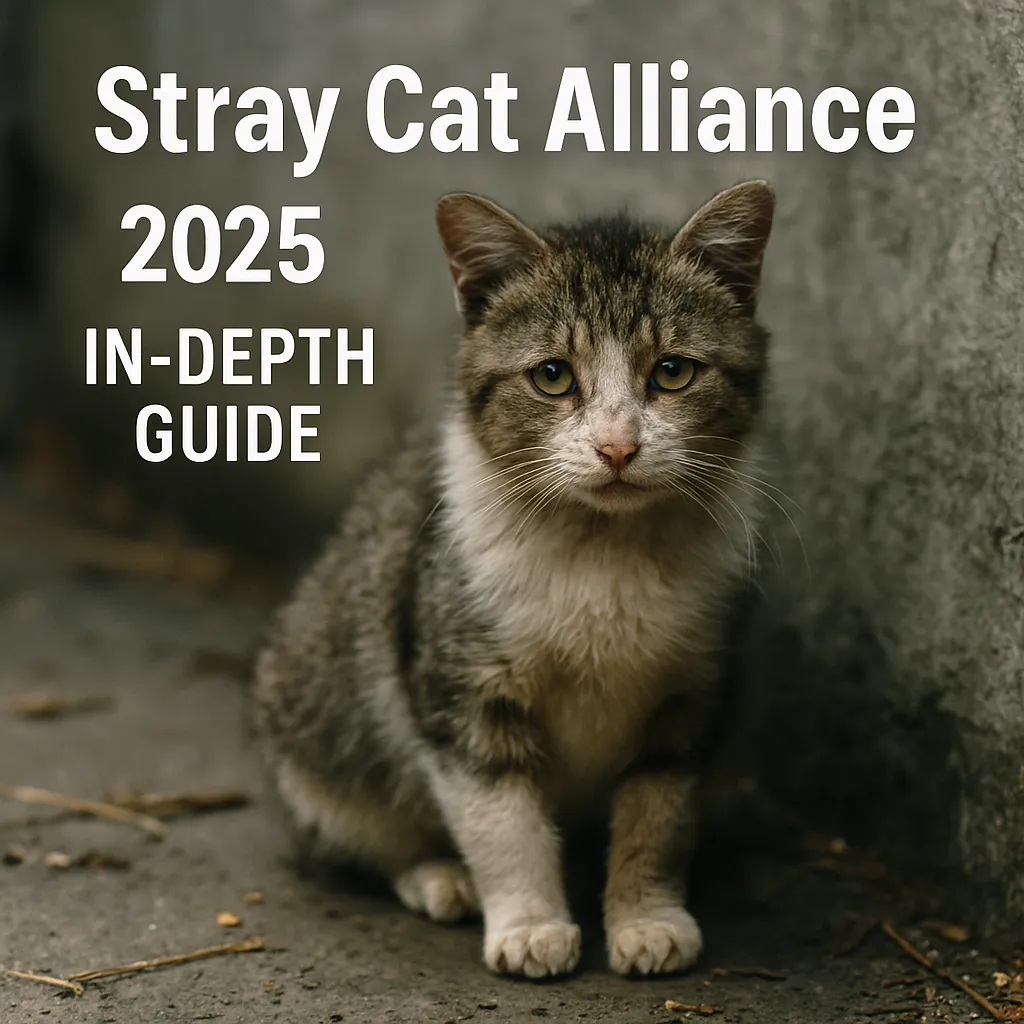
Please share this article so that more stray cats and dogs can receive help! 🐱🐶💞
Recommended Articles:
- Can Dogs Eat? Ultimate Guide 2025 (Keep up to date)
- What Do Stray Cats Eat in 2025
- Why Are Dogs So Cute? In-Depth Guide 2025
- Can Dogs Eat Cat Food 2025 In-Depth Guide
- Stray Cat Alliance 2025 In-Depth Guide
2026 Annual Event😊:
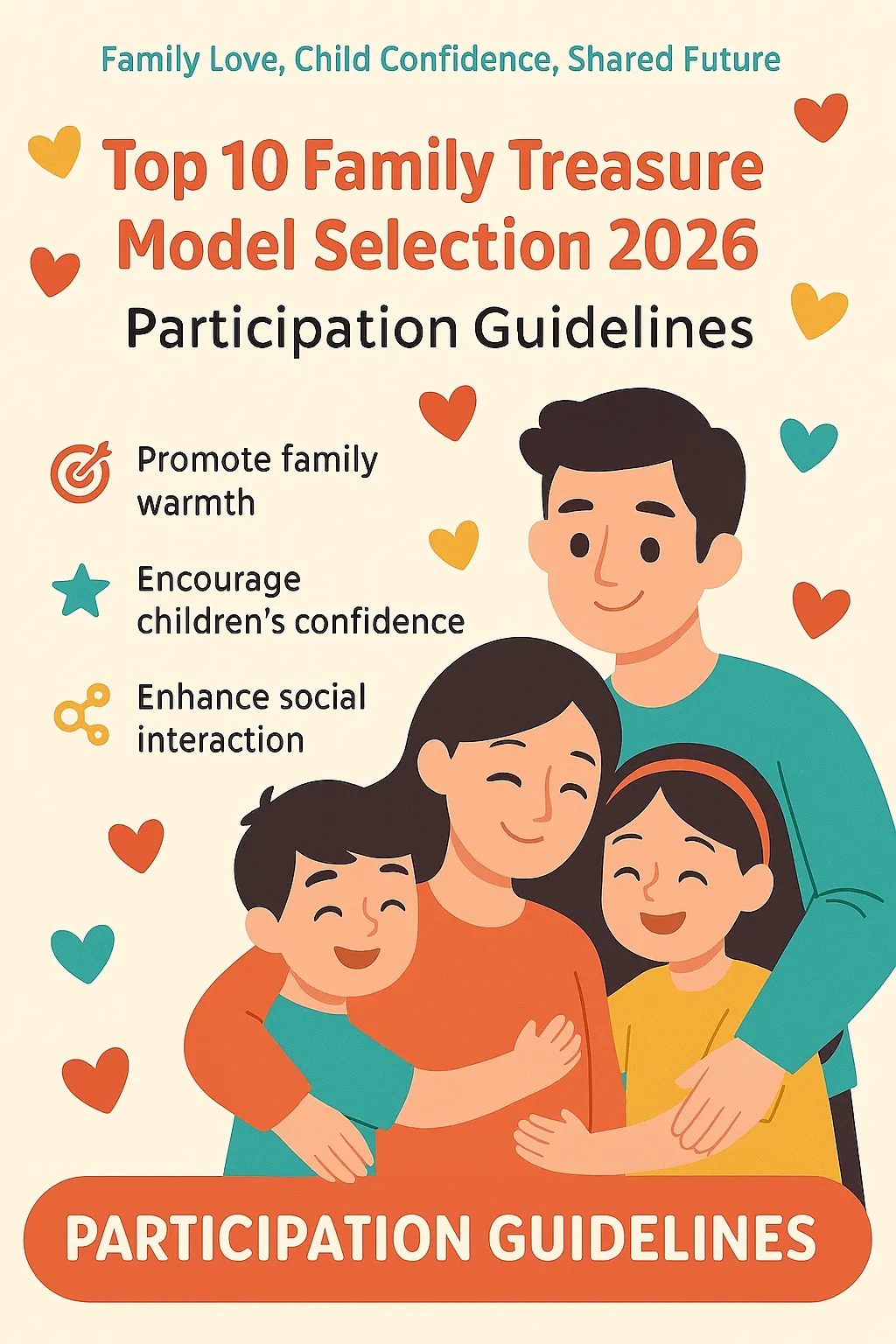
💕2026 Top Ten "Family Treasure" Model Selection💕
Participation Guidelines
🎯 Purpose of the Event
- Promote family warmth: Showcase the love and companionship between parents and children
- Encourage children’s confidence: Cultivate stage presence and creativity
- Enhance social interaction: Build a platform for family and community engagement
👶 Eligibility
- Age requirement: Children aged 3–12
📅 Event Schedule
- Registration period: December 1, 2025 – December 1, 2026
📝 Registration Method
- Online registration: Send application materials to Email: [email protected]
- Required materials:
- A child’s daily photo or a talent performance video (1–2 minutes)
- One family group photo
- A brief family story or participation statement
🏅 Awards
- Honorary Title: Top Ten "Family Treasure" Models
- Recognition: The names and corresponding photos of the winners
- Will be permanently displayed on the website loveahh.com
📌 Notes
- Authenticity of materials: All submitted information must be genuine and valid

